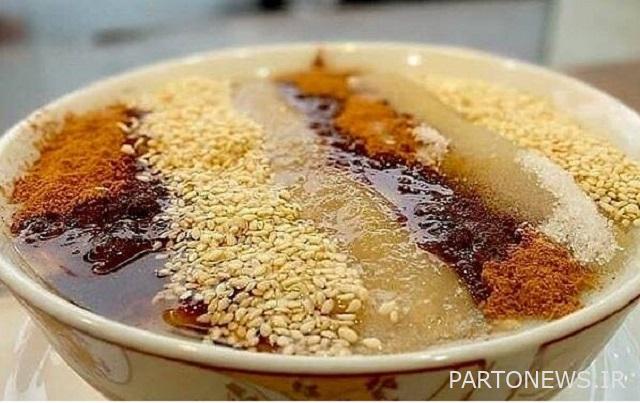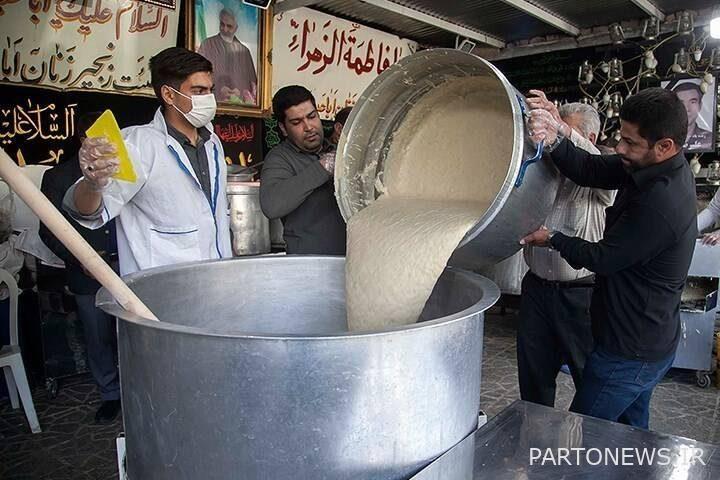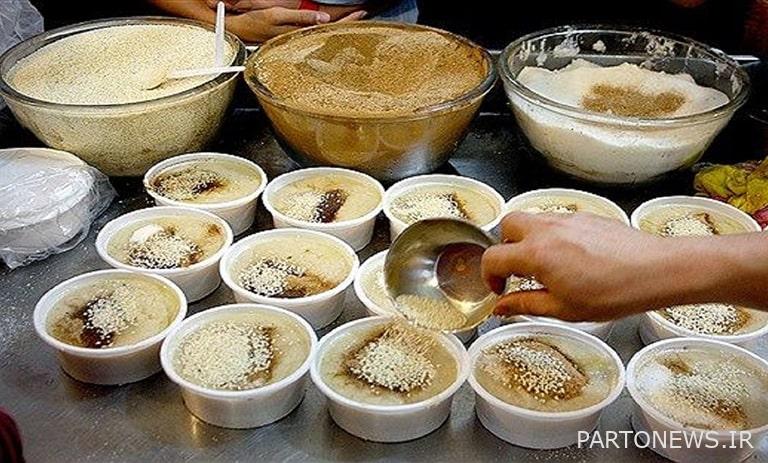Haleem, the food offered during Muharram mourning days from the Safavid period until now

Haleem is one of the votive foods that on some religious occasions, especially during Muharram mourning days, many Iranian families in cities and villages prepare to cook Nazri haleem in large pots from night to early morning. In the cookbooks of the period Safavi does not discuss an independent food called haleem, but in the chapter on types of harises, wheat harise is mentioned, the preparation method and ingredients of which are completely compatible with today’s haleem.
Haleem, which is called harise in Arabic, is one of the traditional dishes of the Middle East region, especially Iran, which is generally cooked with mutton, beef, wheat or bulgur and barley. It is written in historical books that this harissa is a kind of ordinary and popular food, and there were harissa cooking shops in the market that offered all kinds of harissa to customers.
In some Iranian traditional medicine books, many benefits have been listed for Haleem and Harise, for example, Hakim Momen, who considered Haleem and Harise to be similar to each other, for its benefits such as general strengthening of the body, fattening, nerve tonic and physical strength, cough and violence reliever. Glo has also mentioned. It is also recommended to eat grapes with harissa, or to put some grapes in a pot of harissa.
In the cooking books of the Safavid period, there is no discussion of an independent food called haleem, but in the chapter of types of harises, wheat harise is mentioned, the preparation method and ingredients of which are completely compatible with today’s haleem, for example in Karnameh, about cooking and industry It comes from Mohammad Ali Kaqih, the cook of Shah Ismail Safavi’s court, the recipe for cooking harissa of wheat.
According to the cook’s instructions, pounded wheat (bulgur) is washed several times in lukewarm water and poured into a pot with fat mutton and cooked until the meat is completely separated from the bones. Wheat harissa should be loaded from evening to morning, and in the morning, stir it with a shoe, add salt, and pour melted sheep oil with cinnamon in the place of stretching.
In “Madeh al-Hiyah” which was written during the time of Shah Abbas I Safavid, it is mentioned about wheat harissa and its cooking method; As wheat harissa is mixed with a little rice and the cooking steps are completely similar to the cook’s instructions for cooking harissa.
In addition to the wheat harissas mentioned in the 2 cookbooks of the Safavid period, there is another dish in these 2 treatises, which is known as Ash Halim. Ash Halim is prepared from pounded wheat and cold meat (boiled meat) along with vegetables such as Shabbos, spinach, turnips, carrots and chickpeas and is eaten with spices such as ginger and cinnamon.
Today, “Ash Haleem”, which is different from Haleem, is cooked in some regions of Iran. This soup is a combination of legumes (lentils, peas and beans) with wheat and meat. In the central regions of Iran, especially in cities such as Malair, Tuysarkan, Hamadan and Borujerd, people like Halim, which has half-pounded wheat grains in it, and it is called grainy Halim.
Semi-pounded wheat or bulghur is known as “orosh” in these areas and is prepared by rural families. They remove the husk of wheat with a wheat thresher and grind it in half with a dastas (traditional manual millstone). There are many vineyards in the mentioned areas, Halim is usually eaten with black grape juice or grape juice syrup or with grape fruit. In Kashan, in addition to wheat, chickpeas are also used in cooking Halim, and sugar or juice is not added when using it.
On some religious occasions, especially during the mourning days of Muharram, on the days of Tasua and Ashura, or on the 28th of Safar, many Iranian families in cities and villages make preparations to cook halim nazri in large pots from night to early morning.
Usually, several members of the family gather at the offerer’s house and participate in the preparation of Haleem, especially stirring it, and stir the Haleem vigorously with a paddle or a foam till the morning. This work is done in turn and usually the needy people do this to meet their needs or to get rewards and take Halim Nazri to their homes early in the morning.
Some families also cook a lot of halim and invite mourning delegations for lunch and treat them with halim and syrup. Haleem is one of the foods that are placed on the iftar table. During the nights of Ramadan, many families cook haleem for iftar or buy haleem from haleem shops a few hours before breaking the fast. Ready Halims are decorated with various seasonings and spices, especially coconut, cinnamon, pistachios and almonds, sugar and melted oil.

Registration of Halim Qazvin in the National List of Intangible Heritage
In Iran, Halim Qazvin is very famous. So that Halim Qazvin is included in the list of intangible national heritage of the country and in other cities like Tehran, Halim is sold under the advertising title “Halim Qazvin”.
This haleem is a little different from other haleems, because at the end the haleem is served with cooked stuffing and paste. Halim Nishaburi is prepared with peeled wheat and mutton and has a very delicious taste. In Mashhad and Neishabur, this Halim is mostly prepared on the days of Shahadat, Muharram, Safar, and especially Tasua and Ashura, which is considered a sacrificial food.
Shushtar Halim has been one of the famous Halims of Iran since the past centuries, which is traditionally cooked in the city of Shushtar and is usually eaten with Sarshir or sometimes sugar and cinnamon. Jamal al-Din Hallaj Shirazi, a writer of the 9th century AH, in mentioning the famous dishes of every city at that time, considers Halim (Harise) to be the famous dish of Shushtar.
In addition to the usual type of wheat halim, which is white in color, another type of traditional halim called “Qolqul” is also cooked in Shushtar, which is yellow in color and beans are used in its cooking. The skill of cooking Qolqol has been registered in Iran’s Intangible Heritage List in 1994.
Harissa (food) is a type of halim that is prepared in Armenia and Iranian Kurdistan, and in Kurdish, it is called Heliseh or Hayriseh. Armenians prepare it with chicken, sheep or beef and Kurds prepare it with turkey or sheep meat and serve it with oil.
In Afghanistan, a food similar to Halim is prepared, which is called Gholur. Gholor Tarsh is one of its most common types. There are other types such as Gholur Tarsh Margh, Gholur Tarsh Fresh Meat, Gholur Tarsh Kofte, Gholur Tarsh Qorme, Gholur Tarsh Safar and Ashkaneh Gholur Tarsh, which are also cooked in South Khorasan and Sistan and Baluchistan provinces.


